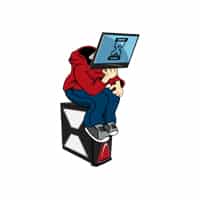Most people these days cannot even remember what it was like to buy groceries without the use of barcodes and barcode scanners. In fact, most young people in today’s generation have probably never thought twice about the technology used to purchase their bread, milk, and eggs on a weekly basis. The reality is that barcodes are not as commonplace as most people think they are. They are new inventions, relatively speaking. The first barcode scanner was used by an individual purchasing a pack of Wrigley’s chewing gum in the 1970s. Take a moment to do the math. That makes barcodes less than 50 years old. To learn more about barcode scanners and barcodes and how they have revolutionized the supermarket industry, take a look at the information below. Most people are surprised to learn that barcode scanners are truly interesting pieces of technology that provide businesses with a host of advantages and benefits.
Before Scanners
Some people reading this article may not even know what life was like before barcode scanners. However, a few older readers may remember the “olden” days (again, really not that long ago) of handwritten ledgers and meticulously hand coded product information. Inventories had to be scrawled out by hand on a regular basis in order to have a grasp on what needed to be reordered and when. The grocery line was not filled with the “beep boops” of electronic do-it-yourself scanning stations. Instead, it was filled with cheerful dings from a vintage-looking cash register that held cash (debit cards had not been around for a very long time either). While these images may stir up a bit of nostalgia, they are really not worth much else thanks to the invention of modern day barcode scanners. Scanners completely changed the way business – particularly supermarkets – function on a day in and day out basis.
Innovations: The Barcode
Yes, the barcode scanner changed everything. All a person has to do in order to see an example of a barcode is rifle through his or her refrigerator or cupboard. Chances are good that just about every box, package, and parcel therein will be affixed with a barcode known as a UPC, also known as a universal product code. If you do not see it at first, look again. It is probably there. What do these codes mean, and what are those little lines all about? Why are they used almost without exception? Read the headings below for these answers and more.
Original Intentions
The barcode and barcode scanners were initially created to aid grocery stores by providing a boost in inventory tracking, an overall more efficient checkout process, and better system analysis. The system made a small start with the aforementioned pack of gum, but it quickly grew leaps and bounds. Within a span of a few decades, barcodes were found in nearly every grocery store on every block due to smashing success and larger profits.
Coding
The parallel lines located on a six-digit UPC (Uniform Code Council) barcode basically function as an identification number that is provided by any given manufacturer. These codes are machine-readable and act as a fast and efficient way to catalog information or provide purchase services.
About Scanners
There is definitely more than one kind of barcode scanner out there. Quality barcode scanners, as those at Shopify, come in all shapes and sizes and have specific niches. For a list including some of the most popular barcode scanners on the market, see the points below:
● Pen wand. This is the most simplistic barcode reader in the barcode reader family. There are no difficult or moving parts and the product is often purchased for sheer durability and affordability. Although this is one of the most popular categories of barcode scanners, it is not the most efficient because the scanning process itself can be a little tricky.
● Image scanner. Image scanners are also sometimes referred to as camera readers. They are intended to capture “snapshots” of a barcode at a very fast pace.
● CDC scanner. This is one of the most common barcode scanners used in department stores and supermarkets. Most people describe CDC scanners as “gun shaped,” with a handle for an individual to maneuver with and a face used for scanning barcodes. The only downside to a CDC scanner is that it cannot read barcodes that are abnormally large.
● Laser scanner. Laser scanners are incredibly versatile and can scan barcodes from any distance. These scanners use a mirror mechanics system that allows barcodes to be read from any angle (even upside down). Some laser scanners are even designed to read barcodes from extreme distances of 30 or more feet away.
As clearly depicted here, barcodes and barcode scanners play an integral role in the everyday functioning of grocery stores, supermarkets, and department stores. They speed up the customer checkout process, provide an easy way for store managers to keep accurate inventory records, and create a simple way to track shipped goods.


